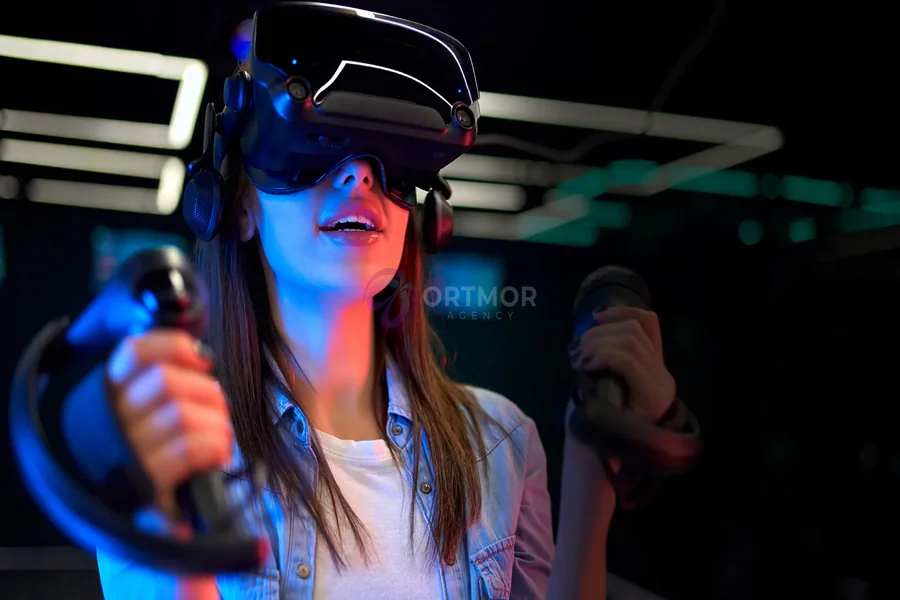Virtual reality is no longer tomorrow’s fantasy, it’s a reality. It’s revolutionizing the way individuals play games. By placing players themselves into virtual worlds, VR immersion is unique. From experiencing wizarding worlds to training in simulation worlds that look and feel exactly like the real world, VR is raising the bar on interactive play.
Why VR Gaming Is on the Rise
Development of VR gaming relies on the way it blends hi-tech potential and man’s exploration instinct. There is a person behind the screen gaming in mainstream video games, but in VR, they are in the action. To be able to perceive all that is happening around them, to be able to get about, and to experience sensations gives the gamer a feeling of freedom almost as actual.
The Thrill of Immersion
What it excels at is immersion. Wearing a headset allows players to step into surroundings that feel real. It comes with sound, picture, and even touch-sensitive haptic feedback. Just as the game player is drawn to the excitement of surroundings such as slot thailand for the experience of immersion, VR draws players in because it immerses players into realistic missions and challenges. This immersion effect also has the secondary effect of making every action and every choice feel nearer and more real.
Social and Multiplayer Experiences
It is also transforming how human beings socialize in video games. Virtual worlds allow individuals all over the globe to converse. They socialize, and play together there. It feels like they were all in the same room. Multiplayer VR gaming allows for cooperative experience that fosters social affiliation, either through cooperative action or competitive action.
Expanding Genres in VR
There are increasing numbers of VR games developed geometrically. At first, there were exploration and simulation games only by genre, but sports, racing, horror, and puzzle games are on the rise as well. VR exercise games are gaining popularity, combining exercise with entertainment and bringing workouts into a fun activity. All this variety makes gamers try out VR experiences based on their own choice.
Challenges Ahead
Despite how far VR has progressed, there is still something to be overcome. Costly equipment, lack of content, and motion sickness continue to hold back most gamers. Companies are reducing the weight of headsets, making graphics better, and devices cheaper to make access to VR available for everyone. With advancing technology, these factors won’t be a problem.
The Role of Education and Training
Besides entertainment, VR is also being used in training and educational applications. VR is used by schools and students to bring science and history to life, while companies use VR for employee training in real application. These applications show that VR gaming isn’t entertainment only, it’s learning and skill gain as well.
Looking Ahead
The future of virtual reality gaming is looking good. As prices on hardware come down and library sizes grow, ever more people will be consumers of the technology. The integration of artificial intelligence, haptic feedback, and cloud computing will keep making virtual reality worlds more and more real life and more interactive.
Final Thoughts
Virtual reality is transforming gaming. It gives increased immersion and sociality. It also gives endless possibilities for creativity. There are issues to be ironed out. But the future is in the direction of VR as a normal part of game existence. Just like smartphones and online gaming are today.
For players, that’s better than enhanced graphics. It’s entering whole new worlds where reality and fantasy blur. Virtual reality is not the future of games; it’s the future of entertainment.


